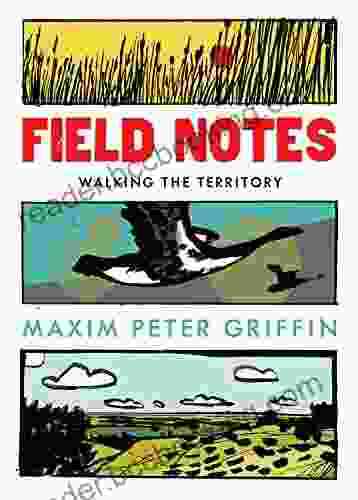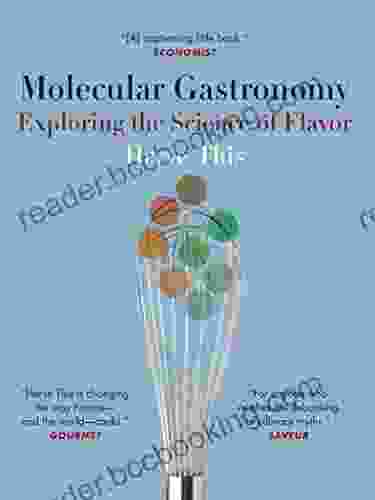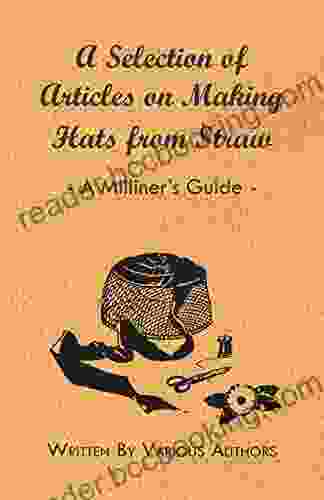Exploring the Science of Flavor: Arts and Traditions of the Table

Flavor is one of the most important aspects of food. It is what makes us enjoy eating and what determines whether or not we will eat something again. But what exactly is flavor? And how can we create dishes that are full of flavor?
4.4 out of 5
| Language | : | English |
| File size | : | 1450 KB |
| Text-to-Speech | : | Enabled |
| Screen Reader | : | Supported |
| Enhanced typesetting | : | Enabled |
| X-Ray | : | Enabled |
| Word Wise | : | Enabled |
| Print length | : | 393 pages |
| Lending | : | Enabled |
The science of flavor is a complex one, but it is also a fascinating one. By understanding the basics of flavor, we can learn how to create dishes that are not only delicious, but also nutritious and visually appealing.
The Basic Elements of Flavor
There are five basic elements of flavor: sweetness, sourness, bitterness, saltiness, and umami. These five elements interact with each other in different ways to create a wide range of flavors.
- Sweetness is the taste of sugar. It is a pleasant taste that is often associated with comfort and pleasure.
- Sourness is the taste of acid. It is a sharp and sometimes unpleasant taste that can be found in citrus fruits, vinegar, and yogurt.
- Bitterness is the taste of alkaloids. It is a harsh and unpleasant taste that can be found in coffee, tea, and chocolate.
- Saltiness is the taste of salt. It is a salty and savory taste that is essential for human health.
- Umami is the taste of glutamates. It is a savory and meaty taste that can be found in meat, cheese, and mushrooms.
How Ingredients Interact
The way that ingredients interact with each other is what creates the overall flavor of a dish. When you combine different ingredients, the flavors of those ingredients will either complement each other or contrast with each other.
For example, the sweetness of sugar can complement the sourness of lemon juice to create a refreshing and flavorful lemonade. The bitterness of coffee can contrast with the sweetness of milk to create a rich and complex latte.
The Art of Flavor
Creating dishes that are full of flavor is an art form. It requires a deep understanding of the basic elements of flavor, as well as a creative mind. By experimenting with different ingredients and combinations, you can create dishes that are both delicious and unique.
Here are a few tips for creating dishes that are full of flavor:
- Use fresh ingredients. Fresh ingredients will always have more flavor than processed or canned ingredients.
- Experiment with different combinations. Don't be afraid to try new things. You may be surprised at what you discover.
- Taste as you go. As you cook, taste your food and make adjustments as needed. This will help you to ensure that your dish is flavorful and balanced.
- Don't overcook your food. Overcooked food will lose its flavor and nutrients.
- Serve your food immediately. Food that is served immediately will have the most flavor.
The science of flavor is a complex and fascinating one. By understanding the basics of flavor, we can learn how to create dishes that are not only delicious, but also nutritious and visually appealing. So next time you're cooking, experiment with different ingredients and combinations. You may be surprised at what you discover.
4.4 out of 5
| Language | : | English |
| File size | : | 1450 KB |
| Text-to-Speech | : | Enabled |
| Screen Reader | : | Supported |
| Enhanced typesetting | : | Enabled |
| X-Ray | : | Enabled |
| Word Wise | : | Enabled |
| Print length | : | 393 pages |
| Lending | : | Enabled |
Do you want to contribute by writing guest posts on this blog?
Please contact us and send us a resume of previous articles that you have written.
 Book
Book Novel
Novel Page
Page Chapter
Chapter Text
Text Story
Story Genre
Genre Reader
Reader Library
Library Paperback
Paperback E-book
E-book Magazine
Magazine Newspaper
Newspaper Paragraph
Paragraph Sentence
Sentence Bookmark
Bookmark Shelf
Shelf Glossary
Glossary Bibliography
Bibliography Foreword
Foreword Preface
Preface Synopsis
Synopsis Annotation
Annotation Footnote
Footnote Manuscript
Manuscript Scroll
Scroll Codex
Codex Tome
Tome Bestseller
Bestseller Classics
Classics Library card
Library card Narrative
Narrative Biography
Biography Autobiography
Autobiography Memoir
Memoir Reference
Reference Encyclopedia
Encyclopedia Vivek Ramaswamy
Vivek Ramaswamy Mark Allen North
Mark Allen North Marie Killilea
Marie Killilea Knut Walter
Knut Walter Susan Whitman Helfgot
Susan Whitman Helfgot Krishna Dharma
Krishna Dharma Simone Edwards
Simone Edwards Kirk Mcdonough
Kirk Mcdonough Krista Van Laan
Krista Van Laan Minouche Shafik
Minouche Shafik Richard Kaufman
Richard Kaufman Rosary O Neill
Rosary O Neill Michael Deshotels
Michael Deshotels Nancy Keene
Nancy Keene William Bronchick
William Bronchick Richard Corman
Richard Corman Steven Brill
Steven Brill Tara Teaspoon
Tara Teaspoon Kristine Kathryn Rusch
Kristine Kathryn Rusch William Edwin Baxter
William Edwin Baxter
Light bulbAdvertise smarter! Our strategic ad space ensures maximum exposure. Reserve your spot today!

 John GrishamUnlock the Secrets of Statistical Inference with Krishna TB Probability Code...
John GrishamUnlock the Secrets of Statistical Inference with Krishna TB Probability Code...
 Christian BarnesThe People and Forces Behind America's Fifty-Year Fall and Those Fighting To
Christian BarnesThe People and Forces Behind America's Fifty-Year Fall and Those Fighting To Gary ReedFollow ·17.9k
Gary ReedFollow ·17.9k Douglas AdamsFollow ·12.8k
Douglas AdamsFollow ·12.8k Gustavo CoxFollow ·4.6k
Gustavo CoxFollow ·4.6k Eddie BellFollow ·6.5k
Eddie BellFollow ·6.5k Aubrey BlairFollow ·2.6k
Aubrey BlairFollow ·2.6k Jayden CoxFollow ·19.2k
Jayden CoxFollow ·19.2k Clark BellFollow ·12.3k
Clark BellFollow ·12.3k John ParkerFollow ·3k
John ParkerFollow ·3k

 Liam Ward
Liam WardUnleash the Power of Goblin Slayer: Discover the Gripping...
Enter the Shadowy Realm of...

 Eli Brooks
Eli BrooksWalking the Territory: Your Essential Companion for...
Adventure Awaits! Prepare to immerse yourself...

 Floyd Richardson
Floyd RichardsonGoblin Slayer: A Gripping Light Novel Series That Will...
Step into the shadowy...

 Dennis Hayes
Dennis HayesFrom Strategy to ROI: The Ultimate Guide to Driving...
In the dynamic and competitive business...

 Edward Reed
Edward ReedUnveiling the Rich Tapestry of Tennis in Britain: A...
: Tennis - A British Love Affair Tennis, a...

 Michael Crichton
Michael CrichtonEscape into the Thrilling World of "Here and Now" by...
In the tapestry...
4.4 out of 5
| Language | : | English |
| File size | : | 1450 KB |
| Text-to-Speech | : | Enabled |
| Screen Reader | : | Supported |
| Enhanced typesetting | : | Enabled |
| X-Ray | : | Enabled |
| Word Wise | : | Enabled |
| Print length | : | 393 pages |
| Lending | : | Enabled |








